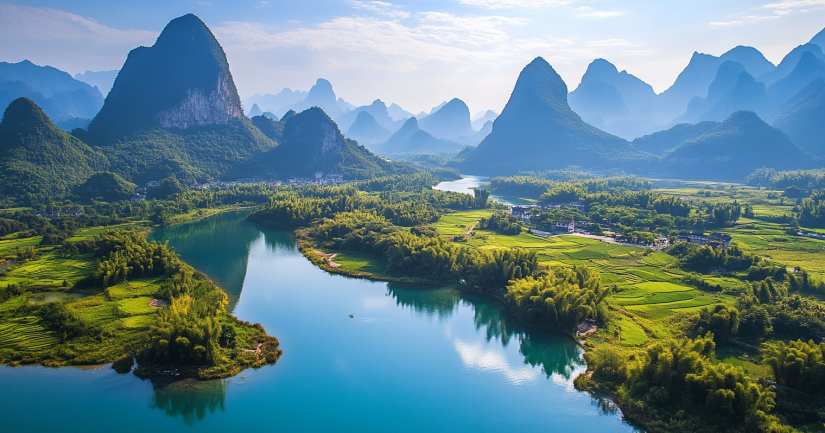
How well do you know China’s geography, Test your knowledge of this vast China Geography Quiz, Test Your Knowledge of China’s Land, Rivers, and Climate. The China Geography Quiz challenges your understanding of one of the most geographically diverse countries in the world. Stretching across over 9.5 million square kilometers, China’s landscapes include towering mountains, vast deserts, fertile plains, and tropical coastlines. Its geography has shaped its history, economy, and cultural development, influencing where people live, how they farm, and how cities grow. This quiz will test your knowledge of China’s provinces, major rivers, climate zones, and geographical landmarks.
China’s geography is defined by dramatic variations in elevation and climate. The Himalayas, home to Mount Everest, form a natural border with Nepal and Bhutan. In the north, the Gobi Desert and Taklamakan Desert cover vast regions of Inner Mongolia and Xinjiang, creating some of the driest areas on Earth. The Karst mountains of Guilin, known for their unique limestone formations, attract millions of visitors each year. Meanwhile, the Yellow River Basin, often called the “Cradle of Chinese Civilization,” played a crucial role in the early development of Chinese society.
If mapping the geography of China has sparked your curiosity, why not explore its dynamic China Cities Quiz? Or take a seasonal dive into the Chinese Calendar Quiz to uncover more cultural insights.
Enter the China Geography Quiz Now
China’s Diverse Landscapes and Natural Wonders
The Major Rivers That Shape China
China’s vast river system supports agriculture, transportation, and urban development. The Yangtze River, the longest in Asia, stretches over 6,300 kilometers and serves as a major trade route. The Yellow River, known as the “Mother River of China,” has been essential to China’s early civilization but has also caused devastating floods throughout history. The Pearl River Delta, home to cities like Guangzhou, Shenzhen, and Hong Kong, is one of the world’s most densely populated and economically vibrant regions. Other important rivers include the Mekong, which flows through Yunnan province into Southeast Asia, and the Brahmaputra, which carves through Tibet’s rugged landscape.
The Provinces and Autonomous Regions of China
The municipalities of Beijing, Shanghai, Tianjin, and Chongqing serve as political, economic, and cultural hubs. Meanwhile, the Special Administrative Regions of Hong Kong and Macau maintain separate legal and economic systems under China’s “One Country, Two Systems” policy.
China’s Coastline and Maritime Influence
China’s extensive coastline stretches over 14,500 kilometers, bordering the East China Sea, South China Sea, and Yellow Sea. Major port cities like Shanghai, Shenzhen, and Qingdao drive international trade, while islands such as Hainan are popular tourist destinations. The South China Sea, a region of strategic importance, has long been a focal point of maritime trade and geopolitical disputes. Coastal regions like Zhejiang and Fujian have a history of seafaring, with ancient maritime routes connecting China to the rest of Asia, Africa, and Europe.
How Well Do You Know China’s Geography?
China’s vast and diverse landscapes have shaped its history, economy, and way of life for thousands of years. From towering mountains to bustling river cities, its geography continues to influence modern development. Take the China Geography Quiz to test your knowledge of this fascinating country’s landforms, rivers, and climate zones!
China Quizzes – Explore the Wonders …
